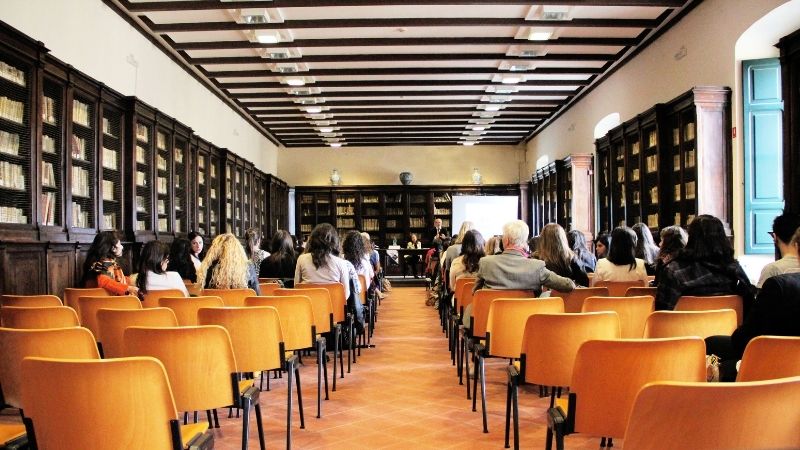
Unraveling the Learning Universe of Special Needs Students
Articulating an Elaborate Explanation of the Varied Learning Complexities Special Needs Students Navigate, from Learning Disabilities and Autism to ADHD, Dyslexia, and Emotional Disorders.
This article aims to explore the multifaceted challenges special needs students encounter in their learning journey.
By delving into specific conditions such as learning disabilities, autism, ADHD, dyslexia, and emotional disorders, we seek to uncover the unique pathways through which these individuals navigate their educational processes.
Furthermore, this article will shed light on the distinctive strategies employed by special needs students as they tackle the learning process in a manner that is distinctively their own.
Key Takeaways
- Learning disabilities, autism, ADHD, dyslexia, and emotional disorders are all examples of varied learning complexities that special needs students navigate.
- Special needs students face challenges in various areas such as reading, writing, math, attention, memory, and social interaction.
- Strategies such as using assistive technologies, specialized instructional techniques, self-advocacy, seeking support from professionals, and classroom accommodations can help special needs students overcome their challenges.
- Each individual with a learning disability or special need has their own unique strengths and challenges, and interventions should be tailored to meet their specific needs in order to foster academic and personal growth.
Understanding Learning Disabilities: Exploring the Challenges and Strategies
Understanding learning disabilities requires an exploration of the challenges faced by individuals with these disabilities and the strategies they employ in navigating the learning process.
Learning disabilities, such as dyslexia, ADHD, and autism spectrum disorders, present unique obstacles that can affect various aspects of a person's academic performance. These challenges may include difficulties with reading, writing, math calculations, attention and focus, memory retention, and social interaction.

However, individuals with learning disabilities often develop effective strategies to overcome these challenges. These strategies may involve using assistive technologies or accommodations in the classroom setting, implementing specialized instructional techniques tailored to their specific needs, engaging in self-advocacy to communicate their requirements effectively, and seeking support from educators or professionals trained in working with students with learning disabilities.
Navigating the Autism Spectrum: Unraveling the Unique Learning Pathways
Autism Spectrum encompasses a range of unique learning pathways that require in-depth exploration. Individuals on the autism spectrum possess distinctive cognitive and sensory processing profiles, resulting in diverse learning needs and challenges. Understanding these complexities is crucial for developing effective autism interventions that support individuals in their educational journey.
One key aspect of autism interventions is addressing sensory processing differences. Many individuals on the spectrum experience heightened or diminished responses to sensory stimuli, which can significantly impact their ability to learn and engage with the environment. Implementing sensory-based strategies, such as creating structured routines, providing visual supports, and offering opportunities for self-regulation, can help individuals with autism better process and respond to sensory information.
Furthermore, it is important to recognize that each individual with autism has their own unique set of strengths and challenges. Adopting a patient and empathetic approach allows educators and caregivers to tailor interventions to meet the specific needs of each learner. By understanding the intricacies of the autistic mind, we can create inclusive environments that foster freedom for every individual on the spectrum to thrive academically and personally.
Decoding ADHD: Unveiling the Learning Strategies for Focus and Attention
Effective focus techniques and improving attention span are crucial elements in the learning process, particularly for individuals with ADHD. Understanding how to navigate these challenges requires patience, empathy, and knowledge of the unique strategies that can enhance their ability to concentrate and stay focused.
Effective Focus Techniques
One significant aspect of enhancing focus in special needs students involves the implementation of various strategies and techniques.
Mindfulness meditation is a technique that has shown promise in improving focus and attention in individuals with special needs. This practice encourages students to be present in the moment, helping them to reduce distractions and increase their ability to concentrate on tasks at hand.

Concentration exercises are also effective tools for improving focus. These exercises involve activities such as puzzles, memory games, and visual tracking exercises, which challenge students' cognitive abilities while promoting sustained attention.
By incorporating mindfulness meditation and concentration exercises into their learning environment, educators can create a supportive atmosphere that fosters improved focus and attention span among special needs students.
Transitioning into the subsequent section about 'improving attention span', it is important to recognize that enhancing focus goes hand in hand with extending the duration of sustained attention.
Improving Attention Span
Improving attention span involves implementing strategies and techniques that promote sustained focus and concentration in individuals with special needs. These techniques are designed to enhance their ability to concentrate on tasks, stay engaged, and minimize distractions.
To improve concentration and enhance focus in individuals with special needs, the following strategies can be employed:
Environmental modifications:
Creating a quiet and organized workspace.

Minimizing visual and auditory distractions.
Task-specific techniques:
Breaking down tasks into smaller, manageable steps.
Using visual aids or timers to provide structure and promote time management.
Implementing these strategies can help individuals with special needs develop better attention span skills, leading to improved academic performance and overall functioning. By creating an environment that supports concentration and utilizing task-specific techniques, individuals can experience enhanced focus during learning activities.
Transition: Now that we understand the importance of improving attention span for individuals with special needs, let us delve into another aspect of learning difficulties by unraveling dyslexia: discovering the multisensory approach to reading.
Unraveling Dyslexia: Discovering the Multisensory Approach to Reading
The multisensory approach to reading has emerged as a promising method in unraveling the complexities of dyslexia. Dyslexia, a specific learning disability characterized by difficulties with accurate and fluent word recognition, affects individuals' ability to read despite normal intelligence and opportunities for learning.

Multisensory reading techniques aim to address the underlying processing deficits that contribute to these difficulties. By engaging multiple senses simultaneously, such as visual, auditory, and kinesthetic modalities, this approach provides additional support for dyslexic learners. These techniques often involve using tactile materials, emphasizing phonemic awareness and decoding skills through repetitive practice, and incorporating explicit instruction in letter-sound correspondences.
Dyslexia intervention programs based on multisensory approaches have shown promising results in improving reading skills and overall literacy outcomes for individuals with dyslexia. This research-backed method offers hope and empowerment for those seeking freedom from the challenges posed by dyslexia.
Emotional Disorders and Learning: Unpacking the Impact on Educational Processes
Emotional barriers to learning can significantly impact the educational processes of students. These barriers may arise from various factors such as anxiety, depression, trauma, or low self-esteem.
Coping strategies for learning are essential in addressing these emotional barriers and helping students overcome them to achieve their full potential.
Educating emotional learners requires a patient, empathetic, and knowledgeable approach that takes into account their unique needs and provides appropriate support systems to promote their emotional well-being alongside academic growth.
Emotional Barriers to Learning
with students
- Providing appropriate accommodations and interventions
Coping Strategies for Learning
Coping strategies implemented within the educational context can effectively support students in overcoming challenges and enhancing their learning experience. For special needs students, self-regulation techniques and personalized learning approaches are particularly beneficial.

Self-regulation techniques allow students to develop skills to manage their emotions, behavior, and attention, helping them stay focused on tasks and navigate through potential obstacles. These techniques may include deep breathing exercises, mindfulness practices, or creating visual schedules.
Personalized learning approaches cater to the unique needs of each individual student by tailoring instructional methods, materials, and pacing. This approach empowers students to take ownership of their learning journey and promotes a sense of autonomy and freedom.
Educating Emotional Learners
Educating emotional learners requires a multifaceted approach that addresses the unique cognitive and socioemotional aspects of their learning experience. These learners often struggle with managing their emotions, which can affect their ability to focus and engage in the learning process effectively. To support these students, educators can implement strategies that teach empathy and help them manage their emotions.
Teaching Empathy:
Encourage perspective-taking exercises to develop understanding and compassion for others' experiences.
Foster a classroom environment that promotes inclusivity, respect, and acceptance.
Managing Emotions:

Implement mindfulness techniques to help emotional learners regulate their emotions and reduce stress levels.
Provide opportunities for self-reflection and expression through journaling or art activities.
By incorporating these strategies into the educational journey of emotional learners, educators can create an environment where students feel supported in developing their emotional intelligence while also acquiring essential academic skills.
This holistic approach empowers emotional learners to navigate their learning experience more confidently while cultivating empathy towards themselves and others.
Embracing Unique Learning Styles: Celebrating Individuality in Special Needs Education
Recognizing and valuing the diverse learning styles of special needs students is an essential aspect of fostering an inclusive educational environment. In special needs education, celebrating individuality plays a crucial role in tailoring personalized education to meet the unique needs of each student. By acknowledging that every learner possesses their own set of strengths, weaknesses, and preferences, educators can create a supportive atmosphere that allows for maximum growth and development.
Embracing unique learning styles involves understanding that no two individuals learn in exactly the same way. Special needs students may require alternative teaching methods or accommodations to fully engage with the curriculum. This could include providing visual aids for those with dyslexia or implementing hands-on activities for kinesthetic learners. By adapting instructional approaches to match students' learning preferences, educators empower them to succeed academically while also promoting their self-confidence and independence.
Frequently Asked Questions
Learning disabilities hinder comprehension and retention of information. Students with autism, ADHD, and concentration issues may struggle with focus. Dyslexia challenges reading skills, while emotional disorders affect motivation. Strategies are needed to engage these students in learning.

What Are Some Specific Strategies That Can Help Students With Autism Navigate the Learning Process More Effectively?
Strategies for effective learning in students with autism involve creating structured and predictable environments, using visual aids and schedules, incorporating individualized teaching methods, promoting social interactions, and providing support through specialized therapies.
How Does ADHD Impact a Student's Ability to Concentrate and Stay Focused During Learning Activities?
ADHD can significantly impact a student's ability to concentrate and stay focused during learning activities. It can lead to difficulties in sustaining attention, inhibiting impulses, and organizing tasks. These challenges may require targeted strategies and support to enhance the student's learning experience.
What Are the Common Challenges That Students With Dyslexia Face When Learning to Read, and How Can These Challenges Be Addressed?
Challenges faced by dyslexic students when learning to read include difficulties with phonological awareness, decoding, and fluency. These challenges can be addressed through dyslexia interventions that focus on supporting dyslexic readers and improving literacy skills using specialized reading instruction techniques.
How Do Emotional Disorders, Such as Anxiety or Depression, Affect a Student's Motivation and Engagement in the Learning Process?
Emotional disorders, such as anxiety or depression, can negatively impact a student's motivation and engagement in the learning process. Social support plays a significant role in mitigating these effects, while self-esteem also contributes to a student's overall engagement and motivation.
 Careers in EducationElementary EducationHigh School EducationEducational TechnologyTeaching StrategiesSpecial EducationPrivacy PolicyTerms And Conditions
Careers in EducationElementary EducationHigh School EducationEducational TechnologyTeaching StrategiesSpecial EducationPrivacy PolicyTerms And Conditions
